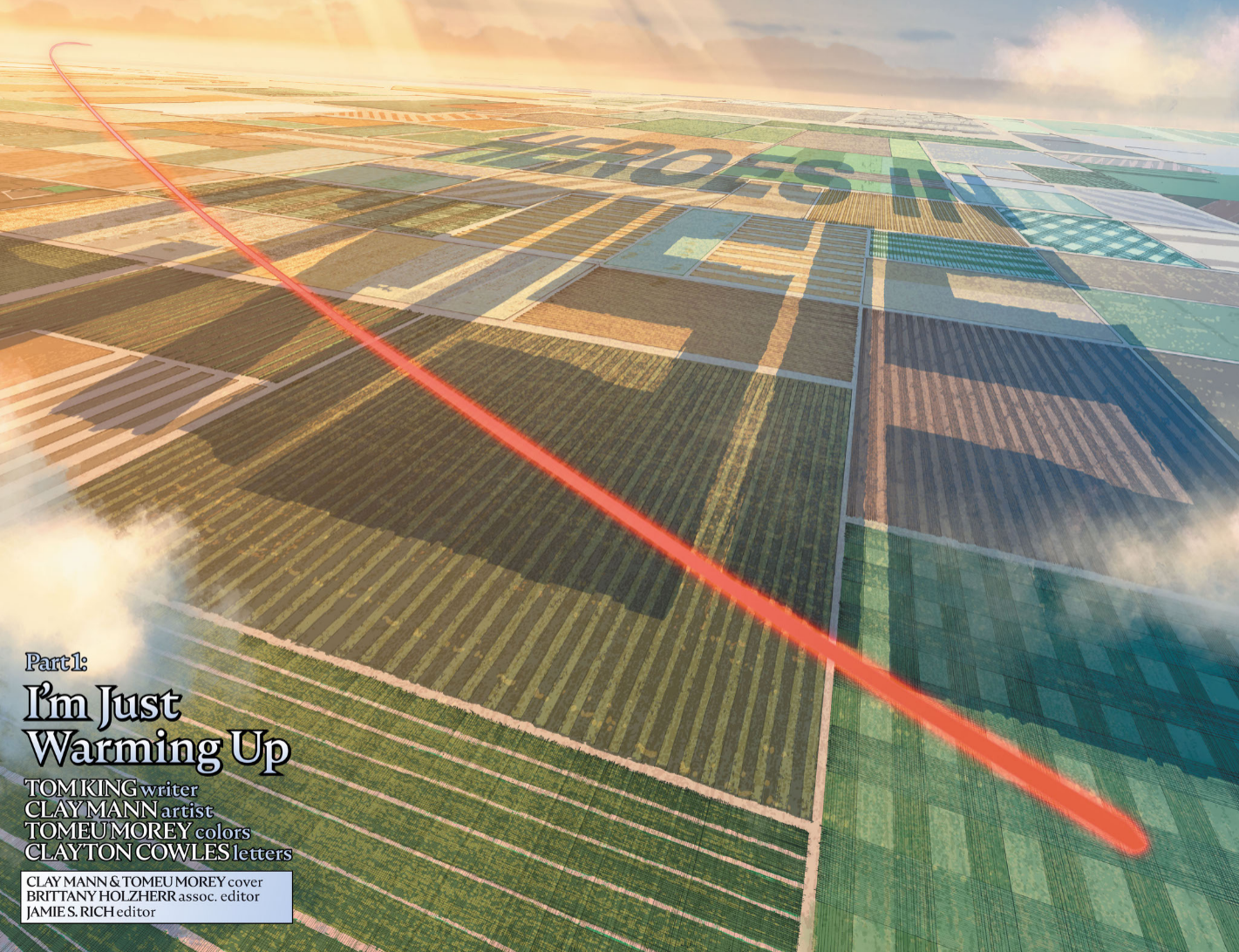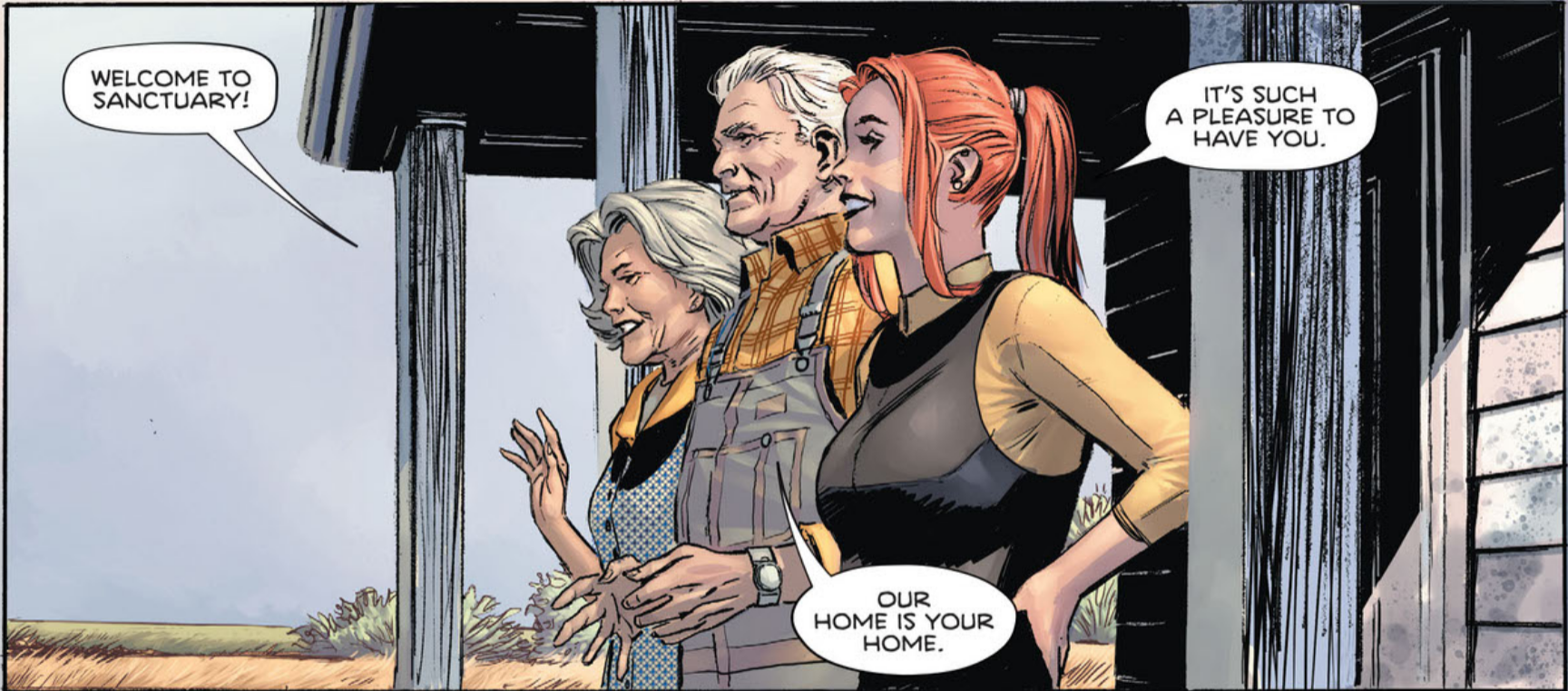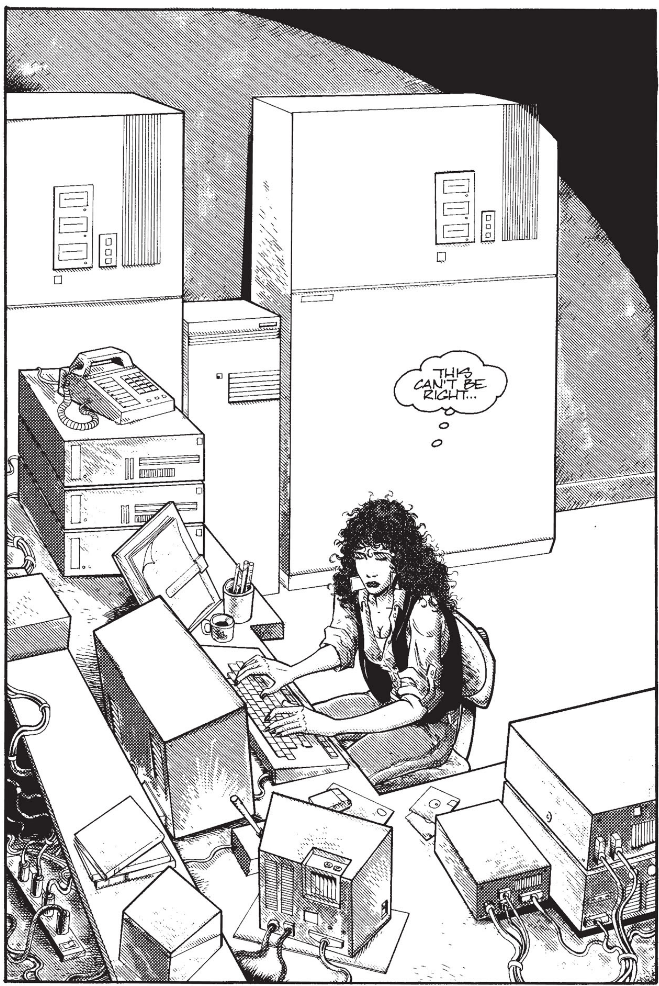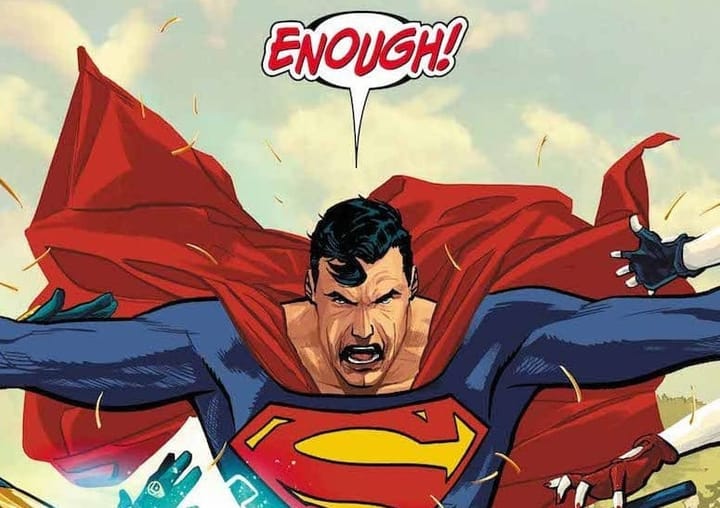One Must Imagine Lagoon Boy Happy, Part 1
Because Tom King sure as shit doesn’t

Wading Through the Ruins
The first issue of DC’s event “Heroes in Crisis” dropped to a glut of positive reviews. Nine months later, I had this to say about the finale:
It ends, much as it began, with the seeds of a strong idea smothered by its own pretensions and a muddy method of delivery, leaving a trail of senseless death caused by one moment of weakness.
It is a statement I still stand by, which is no small miracle, as determining the legacy of a piece of art in the moment is never easy. Many masterpieces go unnoticed in their time, some are even derided, while wildly popular works rapidly fade into obscurity or, worse, are re-evaluated and found wanting. While it’s true some have a clear trajectory in the weeks or months after its creation, be it upwards to prestige or downwards towards infamy, clarity is not a given and even pieces with seemingly firm legacies can shift in the public’s eye; the longer a work exists, the more chances there are for it to be reconsidered.
Time, as always, reveals new facets of everything.
At first blush, “Heroes in Crisis” does not have such facets. It is an insulting, maddening mess of epic proportions, from its production schedule to its marketing to its many, many plot, character, aesthetic and presentational choices. If there is one redeeming factor, it’s the art and even that is rife with lifeless grids, tasteless designs, flat, emotionless characters, and infuriating & demeaning cheesecake. One could spend at least 10,000 words on the failures of “HiC,” and still only scratch the surface.
It failed as a murder mystery. It failed as an exploration into the treatment of trauma. It failed as a piece of superhero media. It failed and failed and failed.

And yet, I can’t quite dispense with the idea that there is something buried there. That in our rush to consign “Heroes in Crisis” to the dustbins of DC history, sealing it away like toxic waste, we’re closing off avenues of exploration that could otherwise prove fruitful and positive.
To that end, I won’t be poking holes in the team’s choices and I won’t be dissecting what went so catastrophically wrong. Much as I would love to tear into it once more, I feel that it’s been decently picked over, and most who initially praised the series have come around to see it for the abject failure that it is. Instead, I want to try a more difficult project: unearthing the ideas hiding within the book, scraping away the dust and rubble to see what of value, if anything, we can salvage after their tremendously botched execution.
Because “Heroes in Crisis” is a ruin, as Sean Dillon over at Comic Book Herald put it, and ruins can be illuminating, not because of what they were meant to be but because of what they appear to be now. In destruction, they spark the imagination, and from that spark can come something new and wonderful.
So, let us consider them.
1. The Promise of A Sanctuary
Central to the project of “Heroes in Crisis” is Sanctuary, the secret facility that’s meant to be a mental health center for heroes, anti-heroes, anti-villains, etc. Introduced in the first issue, Sanctuary is a bit of a mystery - “Heroes in Crisis” has little interest in getting into the nitty gritty of operations or history - but within a couple issues, we’re given the basic structure.
Disguised as a regular farm house, clearly inspired by the Kent family farm, Sanctuary is nestled in the heartland of America, beneath spacious skies and amid fields of amber grain, hidden far away from prying eyes and yet entirely in plain sight, veiled in the trappings of the everyday. As a metaphor for our collective treatment of mental health and an actual explanation for why we’ve never seen/heard of Sanctuary before, its location is quite effective.
Privacy is primary. As we see in issue #3, everyone is given the option to wear a mask and robe for anonymity; there are personalized robo-therapists on staff along with a group of greeters styled like Midwestern farmers. There are holographic therapy rooms, communal eating areas and personal living quarters. It is an overnight facility as well as a place for those just dropping in. Strip away the specifics of how it’s shown to operate and the book’s plot, as well as the sci-fi robot therapists and danger rooms, and what you’re left with is a way station.
Or, put another way, it is what it says on the tin: a sanctuary.

Sanctuaries are places of respite, of escape. A place where one can go for protection when hunted. A refuge. To claim sanctuary is to claim safety, and what better name is there for a place to be safe from one’s past and present than that. In its most basic form, that’s what’s established here. Sanctuary can thus be a place that is not just for the treatment of the myriad traumas encountered by the super community but also a safe place to go and be.
Hold that core concept in your mind. Imagine the possibilities it opens. Not being tied to any one pre-established city means it can serve as a hub for DC characters and a natural crossover point. Imagine it as a place heroes visit after a particularly triggering or challenging mission. Imagine it serving as a mediator for, say, the Shazamily, when they are struggling with sharing their powers. One can set a story entirely within its walls as those living there interact in group-therapy sessions or talk over lunch, masked and enrobed, not quite sure if they’re talking with a former teammate or a former frenemy (or enemy!)
“Heroes in Crisis” already did the work of giving Sanctuary specificity but left many aspects which, in the right hands, could be re-imagined or re-calibrated in addition to the gigantic holes that can be filled-in. Stories can be told of its founding: the how, the why, the impetus for its presence; of its day to day operations and its function in the super community. Is it an arm of the Justice League or entirely off-the-books? How many people DO know about it and what do they think of it? Does it primarily do in-patient care or is it truly more multi-function? What are its limitations and failure points?
This is why Sanctuary, as a location, is exciting. It has the ability to be a staple that cuts against the grain of the constant parade of prisons and asylums that populate the DC universe and be what its name suggests.
A sanctuary.
Liking what you read so far? Want these delivered straight to your inbox or, dare I say it, early? Sign up for a subscription today! Part Two is coming in two weeks but if you're a paid subscriber, you can read this in its entirety right now. Just $1.50 a month and you'll be supporting an independent writer.
If you aren't able to, that's OK as well. I'm just happy you're reading and sticking around.



Comments ()